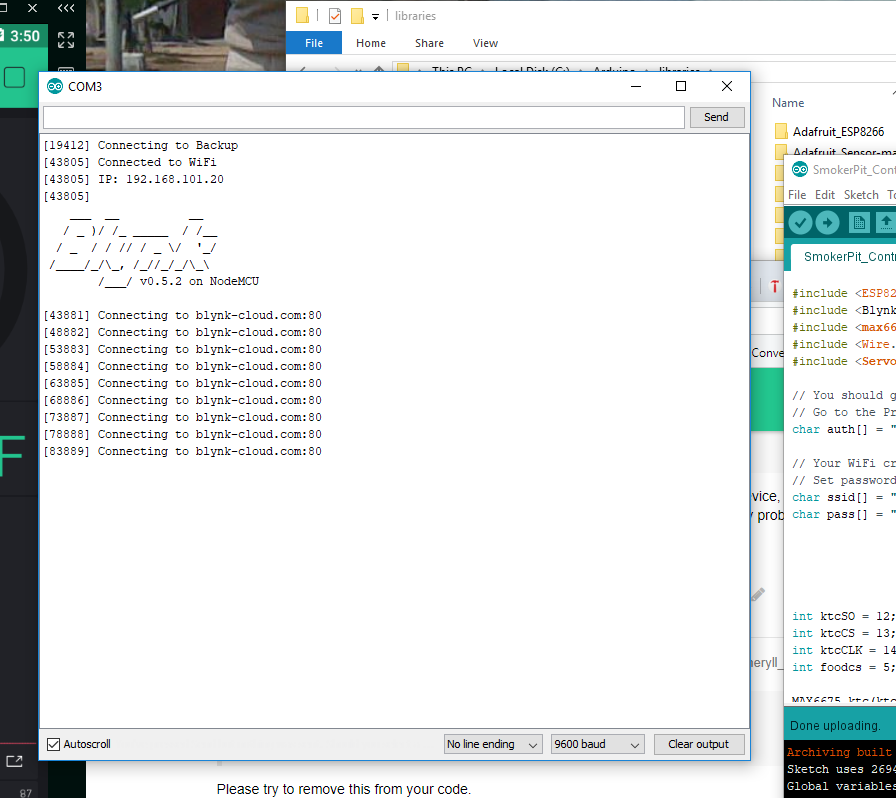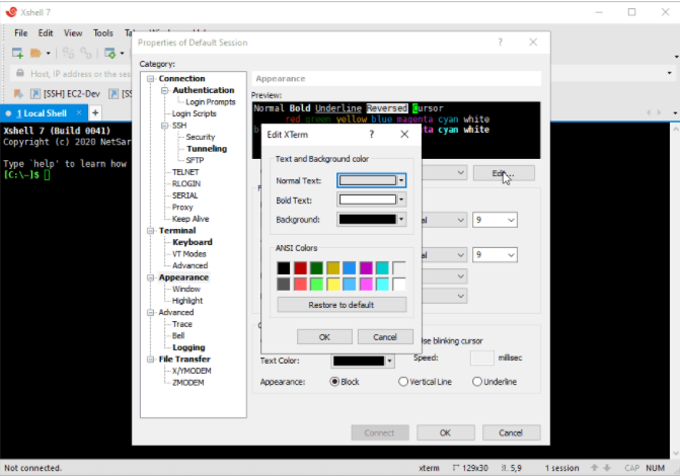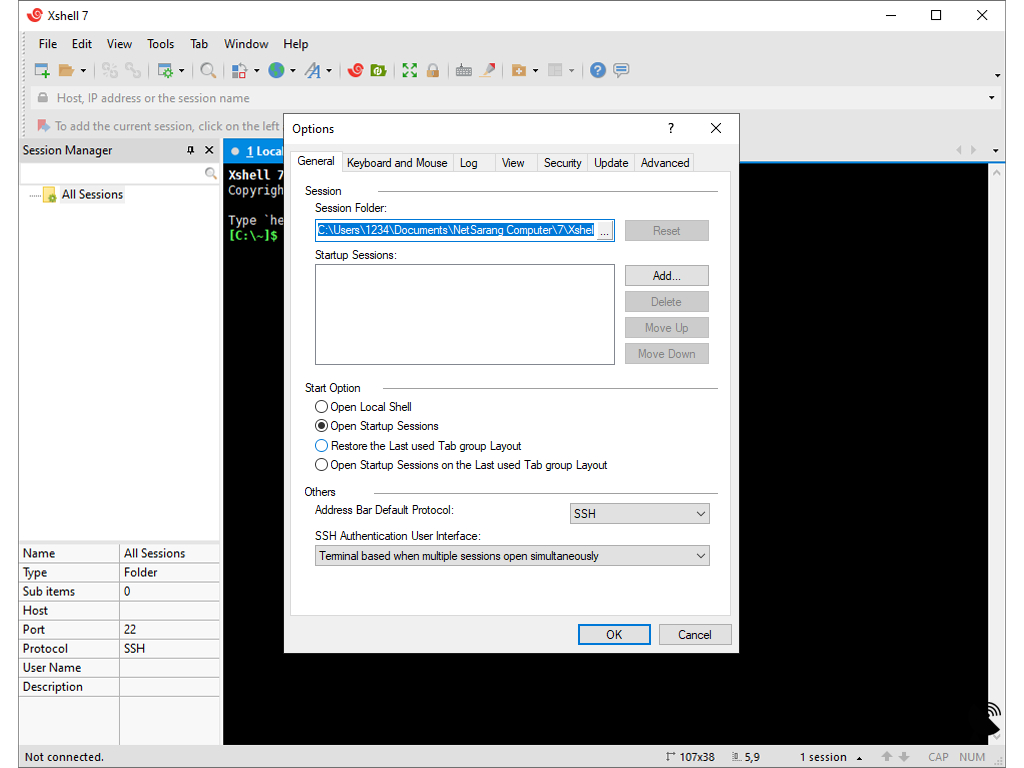SSH IoT Anywhere Free - Remote Device Control
Imagine being able to check on your smart devices, maybe a tiny computer or a home sensor, from a coffee shop across town, or even from another country, without spending a dime. It sounds like something from a movie, yet it is a lot more real and available than you might think. The way of getting SSH for your IoT things, from just about anywhere, without having to pay anything, is truly easier to get into than you might guess.
The idea of controlling things that are not right next to you, especially your little smart helpers, has really picked up steam. People are, you know, trying to figure out how to do this without having to pay for fancy software or subscriptions. This guide, for instance, will show you some rather simple ways to get your devices talking to you from far away, allowing you to manage your little gadgets from just about anywhere you happen to be.
We will go over the steps needed for a typical setup, one that should fit most people's needs. This means, essentially, getting your computer, whether it is a Windows machine or a Mac, to chat with your smart things, giving you a way to keep an eye on them and even fix them if they act up, from just about anywhere. You can, in a way, be there without actually being there, which is pretty cool.
Table of Contents
- Why Think About SSH for Your Smart Gadgets?
- How Can You Get SSH IoT Anywhere Free on Windows?
- What About Raspberry Pi and Other Devices for SSH IoT Anywhere Free?
- Is SSH IoT Anywhere Free Safe to Use?
- Getting Started with SSH on Windows for Your IoT Devices
- Bringing Your Raspberry Pi Online with SSH IoT Anywhere Free
- Keeping Your Remote Connections Secure and Sound
- Making the Most of SSH IoT Anywhere Free
Why Think About SSH for Your Smart Gadgets?
The whole area of smart devices, often called the Internet of Things, is truly growing very quickly. More and more folks are getting little computers, sensors, and other smart bits for their homes or projects. The big question for many is how to keep tabs on these items, or even make changes to them, when you are not right there. That is where a tool called SSH comes into the picture. It is, basically, a safe way to connect to another computer over a network, and it is a pretty good fit for your smart gadgets.
Think of SSH as a special, private tunnel between your computer and your smart device. When you use it, everything you send back and forth is scrambled up, so no one else can peek at what you are doing. This is, you know, a very important part of keeping your home network and your personal information safe. For your IoT systems, SSH gives you the ability to check on them, make sure they are working right, and even fix little problems without having to physically go to where they are.
Being able to reach your devices from a distance means you can, in some respects, be in charge of them no matter where you are. This helps you keep an eye on your smart setups and deal with any issues that pop up, which makes things run a bit more smoothly. It is a really handy way to manage your gadgets and networks without having to be right there in person, saving you time and effort.
How Can You Get SSH IoT Anywhere Free on Windows?
If you are a Windows user, getting started with free SSH access is actually quite straightforward. The journey often starts with something called OpenSSH, which is a set of tools that lets you do SSH things. Good news is, for many newer Windows versions, parts of OpenSSH are already there, or you can add them pretty easily from your computer's settings. This means you do not need to hunt down or pay for extra software just to get going.
Once you have OpenSSH on your Windows machine, the next steps usually involve setting up your smart device to allow these connections and, sometimes, making a small change to your home internet box, what we call a router. This might sound a little bit involved, but it is typically just about telling your router to let the SSH connection through to your specific smart device. With a few careful adjustments, you can have a way to reach your devices from far away, keeping your network safe and your things working well.
The options for getting SSH IoT anywhere free are, quite literally, waiting for you to use them. It is not some secret club or a complicated puzzle; it is more like putting together a few pieces that are already available. You will see that setting up this kind of access on Windows 10, for example, gives you a strong way to check, adjust, and sort out issues with your gadgets from just about anywhere in the wide world.
What About Raspberry Pi and Other Devices for SSH IoT Anywhere Free?
While Windows is a common starting point, the idea of free SSH access extends to many other types of smart devices and computers. Take the Raspberry Pi, for instance, a very popular little computer often used in smart home projects. It is very common to use SSH to connect to a Raspberry Pi, allowing you to give it commands or check its status without needing a keyboard or screen hooked up to it directly. This makes it, you know, incredibly useful for devices that might be tucked away in a corner or hard to reach.
Beyond the Raspberry Pi, many other smart gadgets and smaller computers that run on systems like Linux, such as Ubuntu, also work really well with SSH. The basic idea is much the same: you set up the device to allow SSH connections, and then you can use your computer to talk to it from afar. This broad availability means that no matter what kind of smart device you have, there is a good chance you can get free remote access going with SSH.
The ability to connect to your devices from anywhere in the world, with convenience and also a good amount of safety, is something that free SSH solutions really offer. It is a concept that is, pretty much, changing how people think about managing their scattered smart things. So, whether it is a tiny sensor or a more capable mini-computer, SSH provides a simple and effective method for keeping everything in line, no matter the distance.
Is SSH IoT Anywhere Free Safe to Use?
A very fair question that often comes up is about the safety of using free SSH for your smart devices. It is, to be honest, a good thing to think about. The answer is, yes, SSH itself is built to be a very safe way to connect. It uses special ways to scramble your information, so anyone trying to listen in would just hear gibberish. This means your commands and any information going back and forth are kept private.
However, just like locking your front door, you have to do your part to keep things safe. This means using strong, hard-to-guess passwords for your devices, or even better, setting up a special kind of key that acts like a super-secure digital handshake. You also want to make sure your device's software is kept up to date, as updates often include fixes for any newly found weak spots. By taking these simple steps, you are making your remote access much more secure.
So, while the tools for SSH IoT anywhere free are indeed available without cost, their safety really comes down to how you use them. If you follow some common-sense security habits, like not using easy passwords and keeping your software fresh, then your remote connections will be quite sound. It is, obviously, a good idea to always be careful when you are letting things connect to your home network from the outside.
Getting Started with SSH on Windows for Your IoT Devices
To begin setting up SSH on your Windows computer for your smart devices, you will first want to check if OpenSSH is ready to go. For many newer versions of Windows, this is often a built-in feature you just need to turn on. You can usually find it in your Windows settings, under "Apps" and then "Optional features." Look for "OpenSSH Client" and "OpenSSH Server." If they are not there, you can add them. This step is, you know, pretty straightforward and gets your Windows machine ready to talk SSH.
Once OpenSSH is in place, the next part involves getting your smart device ready to receive these connections. This often means going into the device's own settings and making sure its SSH feature is switched on. For example, if you have a Raspberry Pi, you would usually do this through its operating system settings. It is a bit like making sure your phone is set to answer calls before someone tries to ring it. This makes sure your smart gadget is listening for your SSH connection.
Then, there is the part about your home internet router. To connect to your smart device from outside your home network, you might need to tell your router to let SSH traffic through to that specific device. This is often called "port forwarding." It is, in a way, like putting a sign on your home saying "deliver mail for John here." This tells the internet where to send the SSH connection meant for your smart device. You will need to look up how to do this for your particular router, but it is a common thing to set up.
Bringing Your Raspberry Pi Online with SSH IoT Anywhere Free
Getting your Raspberry Pi ready for SSH IoT anywhere free is a common task, and it is thankfully quite simple. When you first set up a Raspberry Pi with its usual operating system, Raspberry Pi OS, SSH might not be turned on by default. You can switch it on in a few ways. One common method is to use the Raspberry Pi Configuration tool, which you can find in the graphical menu. Just go to "Interfaces" and make sure SSH is set to "Enabled." This tells your Pi to start listening for those remote connections.
Another way to enable SSH on a Raspberry Pi, especially if you are setting it up without a screen, is to place an empty file named `ssh` (with no file extension) onto the boot section of its memory card before you even put the card into the Pi. When the Pi starts up, it sees this file and automatically turns on SSH. This is, you know, a pretty neat trick for headless setups. Once SSH is on, your Pi is ready to talk to you from a distance.
After your Raspberry Pi has SSH enabled, you can then use your Windows computer (with OpenSSH ready) or a Mac to make the connection. You will use a command line tool, typing something like `ssh pi@your_pi_ip_address`. This tells your computer to try to link up with your Pi using the SSH method. It is, basically, like dialing a phone number to reach your device. With this, you can send commands, move files, and generally take care of your Pi from just about anywhere, making SSH IoT anywhere free a real possibility for your projects.
Keeping Your Remote Connections Secure and Sound
When you are setting up SSH IoT anywhere free, making sure your connections are safe is a very important part of the whole process. One of the first things you should do is change the default password on your smart devices. Many devices come with a standard password, and these are, you know, often well-known and easy for others to guess. Picking a long, unique password for each device is a simple but really effective step to keep unwanted visitors out.
Beyond passwords, consider using what are called SSH keys. These are like super-strong digital locks and keys. Instead of typing a password every time, your computer sends a special digital key to your device, and if they match, you get in. This is, honestly, a much safer way to connect because these keys are very, very hard to copy or guess. Setting this up takes a little bit of time, but it pays off in much better security for your remote access.
Another thing to keep in mind is to regularly check for and install updates for the software on your smart devices and on your computer that you use for SSH. Software updates often include fixes for security weaknesses that have been found. It is, essentially, like getting new, stronger locks for your doors. Keeping everything up to date helps make sure your SSH IoT anywhere free setup stays as safe as it can be, protecting your network from potential problems.
Making the Most of SSH IoT Anywhere Free
The ability to use SSH for your smart devices, from just about any location, without having to pay for it, truly gives you a lot of freedom. It means you can keep an eye on things at home, make quick adjustments to a project, or even fix a little glitch on a device, all while you are out and about. This kind of remote
- How Much Does George Gray Make On The Price Is Right
- How Old Is Paula Deen
- Jeff Bezos Height
- Is Andre 3000 Married
- Kate Beckinsale

Can't connect to blynk-cloud.com:80 - Solved - Blynk Community

Download XShell 8.0.0063 for Windows - Filehippo.com

Download Xshell for Windows 11, 10, 7, 8/8.1 (64 bit/32 bit)